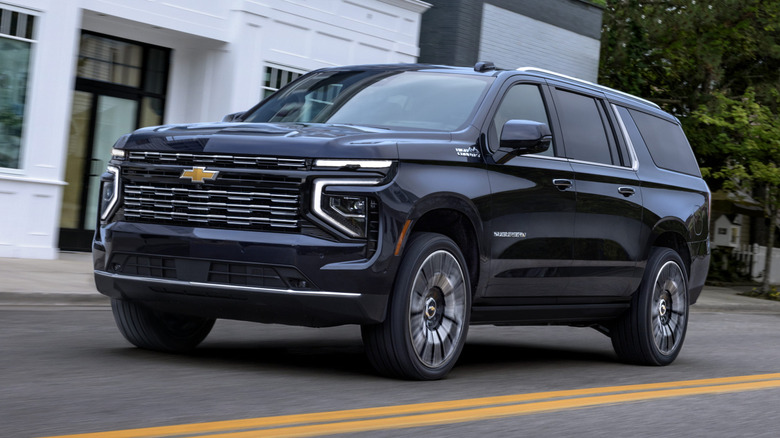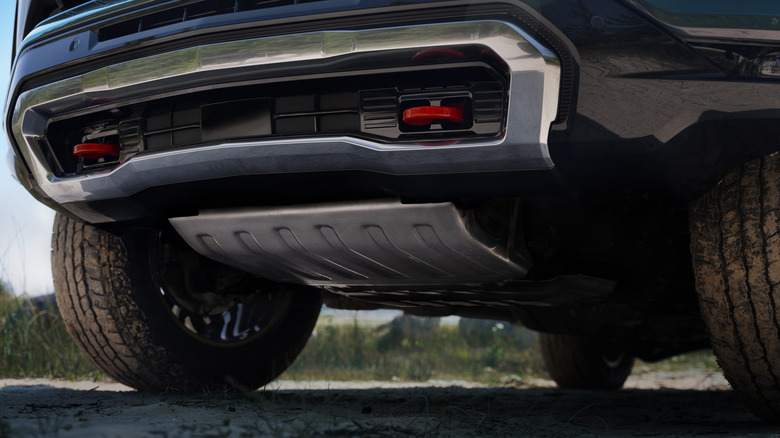Chevrolet's Air Ride Adaptive Suspension Explained: What Is It & Does It Have Any Disadvantages?
Launched on the Chevrolet Suburban and Tahoe for the 2021 model year, Chevrolet's Air Ride Adaptive Suspension is one of several recently introduced features intended to make the full-size SUVs more capable both on and off the road. It's only offered on certain trim levels, with the 2025 Chevrolet Suburban offering the system in RST, Z71, and High Country trims. The system enables the car to adjust its ride height automatically to adapt to different driving environments, prioritizing either efficiency or ground clearance. For example, when the vehicle detects that it is on the highway, it can automatically lower the ride height to increase its aerodynamic efficiency.
It will also lower the ride height if it detects what Chevrolet calls "aggressive driving," like hard acceleration or cornering, in order to improve the car's handling. Enabling the "Easy Exit" feature in the vehicle's Settings menu will also drop the car's ride height when the parking brake is enabled, to make getting out of the vehicle less of a challenge for younger or less mobile passengers.
When the car is set to off-road oriented modes, such as Terrain mode, the system increases the ride height to clear obstacles and rougher ground. With the higher ground clearance setting enabled, the Easy Exit feature automatically disables. Easy Exit also isn't available when the car is in Tow/Haul mode, since the ride height is locked to its default position in this mode.
The downsides of Chevrolet's Air Ride Adaptive Suspension
While the Air Ride Adaptive Suspension system is certainly a useful feature, it isn't without its limitations. For starters, it's only available on higher-end trim levels of the Chevrolet Suburban and Tahoe, so buyers looking for a more value-oriented version of either SUV will miss out. It can also only be used sparingly, with Chevrolet warning owners that the system can potentially overheat if it's used frequently within a short time. If that happens, drivers will get a "Leveling System Unavailable" message on the dashboard and will have to wait until the system has cooled down.
The same warning message might also appear if the car is loaded close to its maximum payload capacity. If that happens, it means the system has detected that it doesn't have enough power to raise the air springs further than the current height. The only way to solve that is to lighten the vehicle's load. Parking on a curb can also trigger the system's auto shut-off.
However, the worst warning for drivers to see is the "Service Leveling System" message, which will require a trip to the dealership to fix. It means that the car has detected a fault with either the air compressor, the air springs, or a sensor within the system, and the adaptive suspension won't be available until the problem is dealt with.

